Elevating Your Tokyo Experience: A Complete Guide to Tokyo Tower
England has the Elizabeth Tower, France has the Eiffel Tower, and Japan has the Tokyo Tower. All of these structures have one thing in common: they’re giant structures that tell powerful stories about their respective countries. Let’s explore the tale of Tokyo Tower, an architectural marvel that has seen over 150 million visitors.
Tokyo Tower: A Beacon of Modern Japan
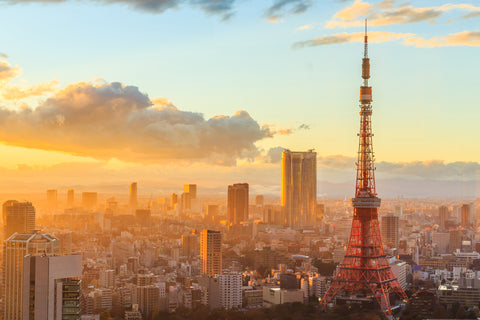
Tokyo Tower is a gigantic structure used for communication and observation. It’s located in the Edogawa district of Tokyo. A symbol of Japan's post-war rebirth and modernity, the tower is a major tourist attraction in Tokyo. Every year, thousands of people visit the buildings in the tower for their museums, shops, restaurants, and observatory decks. Hence, it also serves as a source of income for the Japanese government. There’s a lot to say about Tokyo Tower, but here are some quick facts:
-
The official name of Tokyo Tower is Nippon Denpatō.
-
Standing at a magnificent height of 332.9 meters, the structure is currently the second-tallest tower in the country.
-
It used to be the tallest until the construction of the Tokyo Skytree in 2012.
-
In 1958, it surpassed the Eiffel Tower to temporarily become the tallest freestanding tower in the world.
-
Tokyo Tower is painted white and orange, in compliance with international air safety laws.
-
The steel tower is repainted every 5 years, and the repainting process takes an entire year.
-
Several Japanese media outlets, including NHK and Fuji Television, used the transmission antenna on Tokyo Tower to broadcast signals to their audiences.
Read on if you’re curious to learn more about this gigantic landmark and what it means to the people of Japan.
The History of Tokyo Tower: From Concept to Icon
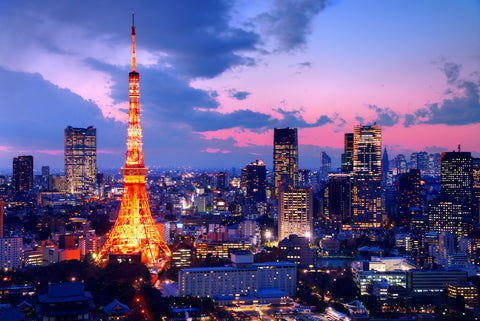
In 1953, Japan finalized plans to open a public radio broadcasting station under the NHK corporation. It would transmit throughout the Kanto region. So they created a broadcasting tower to that effect. This was a regular transmitting structure, not the famed Tokyo Tower we know today. A few months after NHK was established, private corporations began opening their own media companies and building their own towers. The government saw this surge in communication towers as a problem, as they feared too many would be built in Tokyo. So, they proposed a smart solution: build one tower big enough to transmit to all of Kanto.
Plans to construct the Tokyo Tower coincided with the post-war boom in Japan. It was the 1950s and the government was eager to create a symbol of national rebirth. The initial plan by the tower’s owner, Hisakichi Maeda, was to make a structure taller than the United State’s Empire State Building, the highest structure in the world at the time (381 meters). However, those ambitions were shelved due to a lack of resources. The tower’s designer, Tachū Naitō, was tasked with the project, so he got inspiration from France’s Eiffel Tower.
It took the combined efforts of hundreds of construction workers and laborers to build the tower. The Tokyo Tower construction process began in June 1957 and was officially completed on October 14, 1958, when the 90-meter antenna was bolted to the top. The entire project cost ¥2.8 billion or $8.4 million at the time.
Tokyo Tower's Architectural Marvel: Design and Height
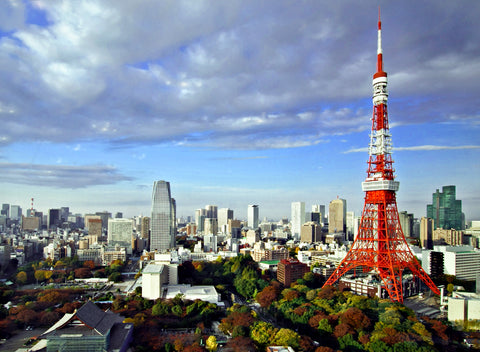
Tokyo Tower is more than a broadcast transmitter. It’s a magnificent feat of engineering that has drawn praise from other countries. Although inspired by the Eiffel Tower, Nippon Denpatō is a good 9 meters taller and weighs 3,300 tons less. The engineers who worked on the lattice tower claim that it can withstand the most intense natural disasters, including earthquakes and typhoons. Based on Tokyo Tower's height, it’s currently the second tallest structure in Japan.
From 1958 to 1967, it held the record for the tallest tower in the world (333 meters). Ostankino Tower (540 meters) succeeded it later. Tokyo Tower was also the world’s tallest lattice tower from 1958 to 1973, when it was succeeded by Kyiv TV Tower (385 meters).
The structure has three main sections, and we’ll reveal each one from bottom to top:
-
Foot Town: This is the lowest section, located at the tower base. You’ll find several souvenir shops, restaurants, and cafes here. The RED Tokyo Tower (entertainment complex) is the most popular attraction in this section.
-
Main Deck: It’s 150 meters above ground, and there are two ways to get here. The first is by riding an elevator and second is by climbing a flight of 660 steps. You may need to pay to access the tower’s main deck, irrespective of how you choose to do it. The most common attraction here is an observatory, but you'll also find a cafe and souvenir shop.
-
Top Deck: It’s 250 meters up and has the best view. You get to see Tokyo from above, in all its glory.
Exploring Inside Tokyo Tower: Attractions and Exhibits

Admiring the sheer greatness of the tower from afar is an incredible feeling, but you’ll get the best experience inside. We’ve compiled a list of the most exciting spots inside Tokyo Tower.
Observation Decks: There are two main observation decks in the tower: Main Deck (150m) and Top Deck (250m). The Main Deck especially offers a panoramic view of Tokyo Metropolis. It also has a look-down floor window that will get your heart racing. The Top Deck houses the third-highest observatory in the city. On a good day, you can see Mount Fuji and the Tokyo Skytree.
Exhibits: For a more immersive experience, consider visiting the aquarium, gallery, or wax museum. The gallery has a vast exhibit catalog of photos and documents related to historical Japanese events. You’ll find it in Foot Town.
Roof Garden: The garden at the top of the tower provides a peaceful contrast to the view of bustling city life.
Tokyo One Piece Tower: This is one of the best spots in the tower. It’s an indoor theme park for enjoying attractions related to the manga and anime series One Piece. Popular attractions include a merchandise shop, live shows, and themed restaurants.
Light Spectacle: At night, the tower becomes illuminated by two lighting arrangements: Landmark and Infinity Diamond Veil. The later arrangement is the newest and most exciting to look at. From afar, it makes the tower look like a gigantic, multi-colored diamond.
Tokyo Tower as a Radio and Television Broadcast Site
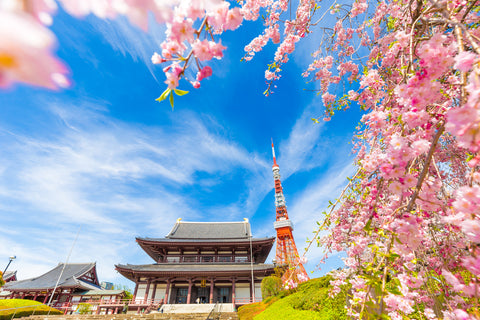
Today, Tokyo Tower continues to serve its intended purpose, which is to broadcast signals through the Kanto region. By far the most important of these signals is the television broadcast. NHk, TBS, and Fuji TV are the major corporations that once used the tower to send signals. Today, Tokyo Tower only broadcasts signals for two FM radio stations, namely Tokyo FM and InterFM, and is no longer viable for TV broadcasting. Why?
As tall as Tokyo Tower is, it’s not tall enough for completely digital broadcasting, which is the most efficient method for modern TV. Tokyo Skytree is a much more viable option for this. Since its creation in 2012, most commercial TV broadcasters have switched to Skytree.
Visiting Tokyo Tower: Tips for Tourists

If you’re planning a visit to Tokyo Tower, there are a few tips to keep in mind. Remember the following:
-
Take note of the deck opening and closing times: Main Deck (9:00 AM to 10:30 PM every day) and Top Deck (9:00 AM to 10:15 PM every day). Arrive at least 30 minutes before the closing time to avoid missing the last admission or tour.
-
The best time to visit Tokyo Tower is in the early morning or late evening of a weekday. This will help you to avoid crowds.
-
If you’re planning to rent a wheelchair, consider making your reservation in advance, as they are limited.
-
Use the secure storage lockers in Foot Town to safeguard your valuables.
-
Do not bring a pet unless they’re a guide or support dog.
-
Ask the entrance staff to guide you on parking.
-
Wear comfortable attire.
Tokyo Tower Tickets: Pricing and Package Options
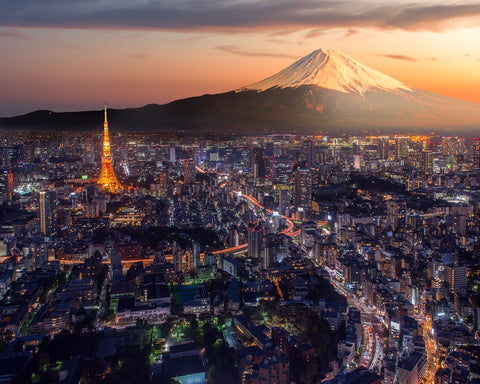
Earlier, we mentioned that Tokyo Tower helps the Japanese government generate revenue through tourism. For this to work, the tower charges access fees. Package options include access to the Main Deck alone or access to both the Main and Top Decks.
-
Main Deck Access: 1200 yen
-
Main Deck and Top Deck Tour: 3000 yen
If you purchase a ticket for both decks in advance, you’re entitled to a 200-yen discount. The RED Tokyo Tower entertainment complex at Foot Town also charges access fees. But pricing packages vary based on the time of your visit. An all-day pass typically costs 3000 to 4700 yen. A pass for the evening (after 5 PM) should cost you 2000 to 3700 yen. You get to play VR and AR games, explore eSports attractions, and unwind at the bar, all with a single pass.
The Perfect Location: Where to Find Tokyo Tower
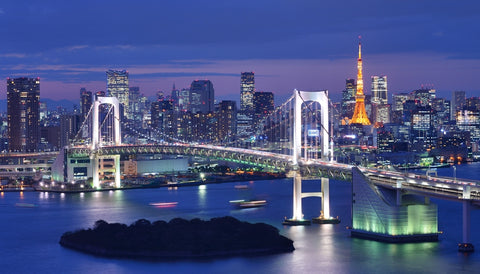
The tower resides in the center of Tokyo, specifically the Shiba-koen district. This district is a region in the Minato ward, and it’s close to other nearby attractions, including Zojo-ji Temple and Shiba Park. Finding Tokyo Tower from anywhere in the city is quite easy. You can ride on the Mita Subway Line and alight at Onarimon Station, which is within walking distance from the tower.
Alternatives include taking the Hibiya Line to Kamiyacho, the Oedo Line to Akabanebashi, and the R Yamanote Line to Hamamatsucho Station. Please note that while the other stations are closest to Tokyo Tower, Hamamatsucho Station is farther, although you can cover the distance with a 15-minute walk.
The View from Above: What to See from Tokyo Tower's Observation Decks
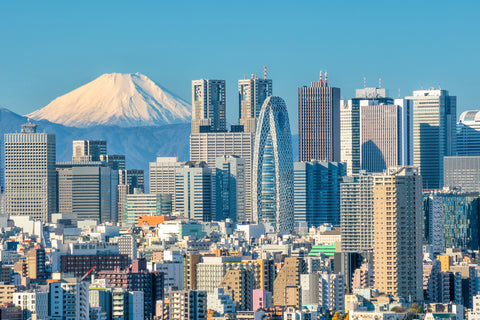
If you can get on the Main Deck of Tokyo Tower, you automatically have ample options for panoramic views. No matter which direction you turn, there’s always something breathtaking to look at, even at night.
Towards the south lies the Shinjuku district, where you can see Roppongi Hills and its high-rise buildings. If you turn a bit, you can clearly see the Rainbow Bridge on Odaiba Island. During clear weather, you can also spot Mount Fuji and the competing Tokyo Skytree (Tokyo’s tallest structure) in the distance.
Cultural Significance: Tokyo Tower in Japanese Media
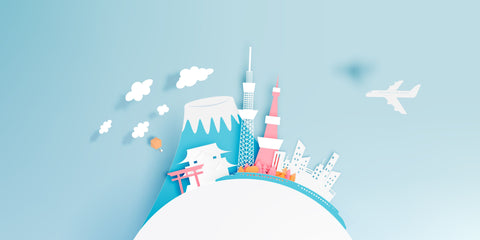
The Japanese intended for Tokyo Tower to serve as a symbol of their country’s post-war success. But as time passed, the tower became much more than that. For many, it has become a national identity, a sentiment shared by Japanese media recently. There have been dozens of appearances by Tokyo Tower in anime and manga series, including Doraemon, Digimon, Please Save My Earth, Death Note, and Sailor Moon. Movies are not left out, as we’ve witnessed several battles at the tower in film franchises like Godzilla and King Kong.
Dining at Tokyo Tower: Culinary Experiences

If your stomach rumbles during your Tokyo Tower tour, feel free to explore any of the dining options available. There are several restaurants and cafes that cater to tourists. To ensure you get the most options, we recommend that you come down to Foot Town. You can also enjoy a meal at any of the restaurants outside the tower. Places like Katsura Steak House, Teppanya Benbe Mita, and Japanese Restaurant SEIZAN serve spectacular meals.
Shopping and Souvenirs: Tokyo Tower's Gift Shops
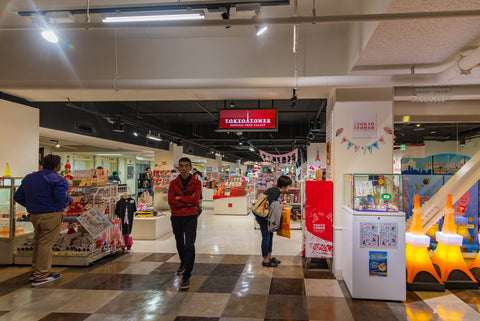
Leave Tokyo Tower with something other than memories by browsing through our list of the best souvenirs and merchandise to get.
-
Miniature replica of Tokyo Tower
-
One Piece merchandise
-
Traditional Japanese tea set
-
Kimono attire and accessories
-
Hello Kitty gift items
-
Traditional Japanese sweets (wagashi)
-
Authentic Japanese art and craft
Seasonal Events and Illuminations at Tokyo Tower

The most important seasonal event at the landmark is the Tokyo Tower Winter Fantasy Illumination, a festival of breathtaking views and bright lights. This event takes place during the Christmas season and includes over 40,000 tower lights illuminating the structure and surrounding tall buildings. You can admire the lighting arrangement from the ground or above. Either way, it makes for a romantic sight with your partner or a wholesome moment with family.
Tokyo Tower's Legacy: More Than Just a Landmark

Even though the structure barely serves its original purpose as a large broadcasting tower, it’s still one of the most relevant in Japan. As a tourist attraction and historic symbol, Tokyo Tower’s legacy continues to appeal to locals and foreigners. It has become so impactful that any tour around modern Tokyo is incomplete without a visit to the Tokyo Tower.
Ascend to new heights of snacking bliss with our Bokksu snack box subscription, where every delicious treat transports you on a culinary journey through Japan's vibrant culture. Just as Tokyo Tower stands tall as an iconic landmark, our curated selection of snacks stands out as a beacon of taste and tradition.
Join us on this savory adventure and elevate your snacking experience to new heights with Bokksu.
Author Bio











